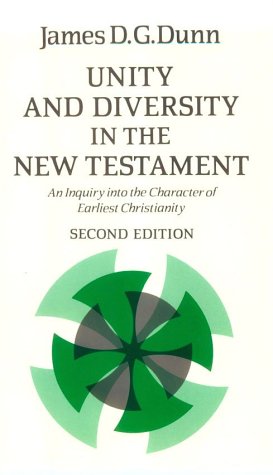Some expression of appreciation is appropriate for this style of monograph. The relative brevity of the work (90 pages of text) and therefore the modest price (by today’s standards), makes for ease of reading in a busy world. This is facilitated further by the crisp layout of the book and the design of the chapters, which are all quite short. The reader is allowed to concentrate on the main theme of the book, which is, in fact, adhered to with little digression by the author. Hengel has written a number of books with this brief and concentrated style, for example, The Son of God published in 1976.
However the brevity of the monograph ought not to mislead the reader that there is anything superficial here. Far from it. Though he is Professor at Tübingen in New Testament and Early Judaism Hengel’s expertise extends far beyond the perimeters of those disciplines. He is a truly interdisciplinary scholar. The sources on which he depends are drawn from the historical period covering many hundreds of years and in cultures well beyond those of his nominal expertise. Hengel is, in fact, the complete ancient historian, who displays a thorough grasp of both Roman and Greek history, with not merely an understanding of main-stream literary sources, but insight into inscriptions and papyri as well. For this reason, the works of Martin Hengel are good models for the aspiring scholar to follow.
What does Hengel teach us about the crucifixion and its implications as related to Biblical Christianity?
First, we are shown that the Romans used crucifixion in a cold and sustained way as a tactic of terror to intimidate and to suppress revolutionaries and potential revolutionaries, and keep the scum of the empire in their place. This was their policy throughout the provinces of the Empire, including that most volatile of provinces—Judaea. It emerges too that crucifixion was accompanied by much torture of the unfortunate victim, both leading up to the act of crucifixion and during the period in which the victim was impaled. Torture and sadism were very frequently perpetrated. (Shades of Dachau.) On some occasions the torture represented the will of the commanding officer; on other occasions, that of the soldiers themselves. Is it that, regardless of the historical period, the circumstances, the culture, the race of people, many of us, given the opportunity of having an impaled, helpless victim before us, will perpetrate on that person unspeakable horrors?
Thirdly, and consequently, crucifixion was not ever the subject of polite conversation among educated or affluent Romans. It was simply ‘bad form’ to even refer to this unspeakable and obscene method of removing the riff-raff of the empire from sight.
Therefore, fourthly, ‘there is reflected’ within the apostolic and post-apostolic literature the amazed reaction of pagans, especially cultivated pagans, that anybody would refer to a divine figure as crucified. In the Second Century, Justin Martyr wrote—
‘They say that our madness consists in the fact that we put a crucified man in second place after the unchangeable and eternal God, the Creator of the world’ (Apology 1, 13. 4).
Within the New Testament itself, Paul wrote to the Corinthians that in the eyes of ‘those who are perishing’, the ‘word of the cross is folly’. The crucified Christ is a ‘stumbling block’ for Jews and ‘folly’ for Gentiles. The pagan mind reeled at the suggestion that a noble man, let alone a divine man, should have been crucified.
And yet, finally, it is Paul’s insistence that this was in fact the case. See for example the Christological passage in Philippians Chapter 2. The Helenistic mind present among the Christians in Corinth was keen to philosophise and theologise about the Christian gospel and to inhabit the world of the Spirit. It was necessary for the apostle to reiterate the centrality of the Cross. Thus for Paul, the cross is no theological symbol, detached from reality. His style of reference and the proximity in time to the historical Jesus reflect the fact that Paul was committed to the historical and the earthly figure of Jesus. Symbolic, unreal language was far from the apostle’s mode of reference.
One missed in Hengel’s work, a reference to the relationship between the two Gospels which were being preached at the time. There was on the one hand, Paul’s internationalistic gospel of the grace of God which was focussed upon the cross of Christ. There was, on the other, the gospel of certain Jewish (Christian) missionaries, which focussed on circumcision as an initiation into the true Israel of the Messiah Jesus—a nationalistic and triumphalist gospel. According to Paul these two gospels were mutually self excluding. Perhaps in a forthcoming work, Hengel may explore these and other vital matters which relate to the crucifixion of Jesus Christ.
Paul Barnett
Paul Barnett
Macquarie University; Moore College; Regent College
Sydney, New South Wales, Australia; Vancouver, British Columbia, Canada






